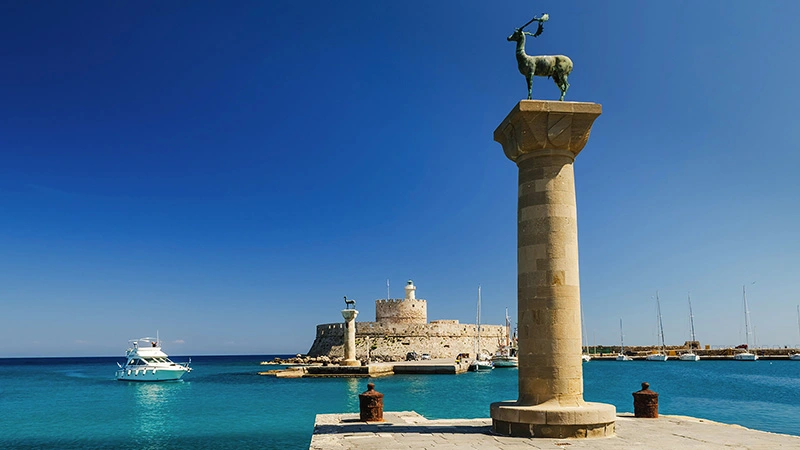A full guide to entrance tickets for Rhodes’ top attractions
Rhodes Island is a dream destination for many people from all over the world. Known for its ancient history, charming villages, and stunning coastlines, the island attracts thousands of visitors every year. Between exploring the medieval town, pristine beaches, and archaeological sites, this place will make you fall in love –but be careful! In order to truly experience the best of Rhodes, planning ahead and securing tickets for Rhodes’ top attractions is essential. Not only does it save you time and money, but it also ensures you won’t miss out on the island’s most remarkable spots.
This comprehensive guide will help you navigate the most popular attractions, providing detailed information on tickets for Rhodes’ top attractions, prices, tips, and how to make the most of your visit.

Tickets for Rhode’s Top Attractions
Rhodes Old Town
The UNESCO-listed Rhodes Old Town is a must-see for every visitor. With its cobbled streets, ancient walls, and charming architecture, it feels like stepping back in time. The Palace of the Grand Master is the crown jewel of this medieval city.
Palace of the Grand Master:
Adult: €8 | Reduced: €4 (seniors, students) | Children under 18: Free
Hours: 8:00 AM – 8:00 PM (April-October); 8:00 AM – 3:00 PM (November-March)
Tip: A combined ticket with the Archaeological Museum is available.
Archaeological Museum of Rhodes:
Adult: €6 | Reduced: €3 | Children under 18: Free
Hours: 8:30 AM – 4:00 PM (Tuesday-Sunday)
Acropolis of Lindos
The Acropolis of Lindos offers breathtaking views over the Aegean Sea and fascinating ruins to explore. Climbing up may be challenging, but the views are worth it.
Adult: €12 | Reduced: €6 | Children under 18: Free
Hours: 8:00 AM – 8:00 PM (April-October); 8:30 AM – 3:00 PM (November-March)
Note: Donkey rides available for €5-10.
Valley of the Butterflies
This natural wonder attracts visitors between June and September when butterflies fill the valley.
Adult: €5 | Children under 12: €3
Hours: 8:00 AM – 6:00 PM (May-September)
Ancient Kamiros
Once a prosperous city-state, Ancient Kamiros offers a glimpse into Rhodes’ rich past.
Adult: €6 | Reduced: €3 | Children under 18: Free
Hours: 8:00 AM – 3:00 PM (Tuesday-Sunday)
Seven Springs (Epta Piges)
For nature lovers, Seven Springs offers a refreshing escape with its cool waters and lush surroundings.
Entrance: Free
Open all day, year-round

Money-Saving Tips for Tickets in Rhodes
Unified ticket options: For €15, you can visit the Palace of the Grand Master, Archaeological Museum, and Ancient Kamiros.
Free admission days: Visit top attractions for free on March 6th, April 18th, May 18th, the last weekend of September, and October 28th.
Online tickets: To skip queues, book your tickets for Rhodes’ top attractions online. GES Travel Agency can help arrange them in advance.
Off-season visits: Prices are reduced by 20-30% during the winter months, though some attractions have shorter hours.
Why Choose GES Travel Agency?
With over 35 years of dedication to private excursions, GES Travel Agency has the knowledge and expertise to provide the best experience during your visit to Rhodes. From arranging tickets for Rhodes’ top attractions to organizing customized tours, GES Travel ensures your trip is stress-free and enjoyable.
Our fleet of modern, luxury vehicles, driven by professional, English-speaking drivers, offers comfort and safety throughout your journey. GES Travel Agency covers all notable tourist ports in Greece and specializes in tailored experiences that match your interests.
For more information, visit the official website at gestravelagency.com.






Leave a Reply